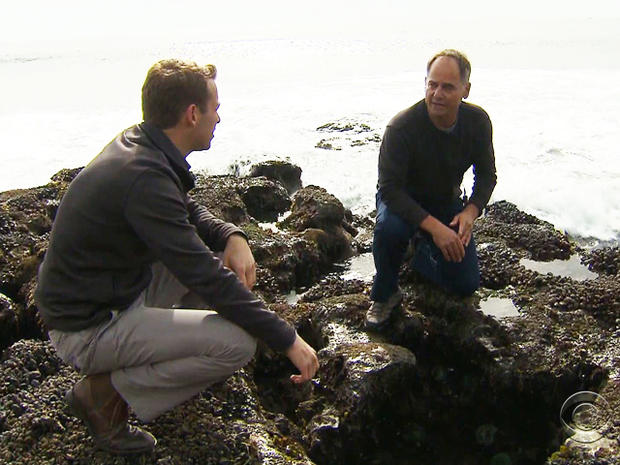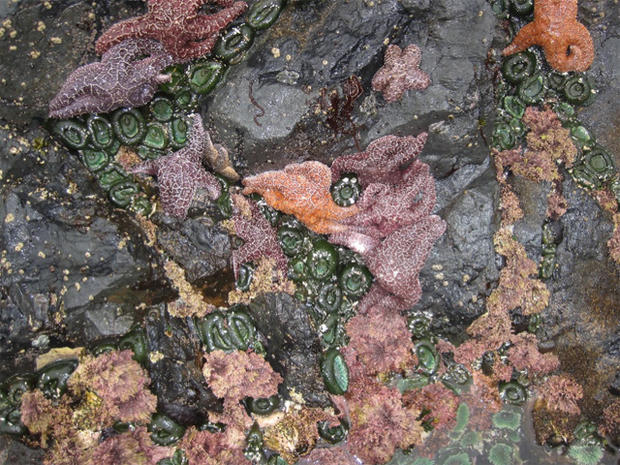What's wiping out the starfish in California?
SANTA CRUZ, Calif. -- Scientists on the West Coast are at a loss to explain what's killing sea stars, also known as starfish. In some places, 95 percent of the starfish population has died.
Marine biologist Pete Raimondi showed CBS News the tide pools along California's Monterey Bay. Thousands of bright sea stars usually line these shores. In less than two months, they've vanished.
Raimondi said the mystery of what is happening to the sea stars is "immense."
"I mean, that's probably, from a scientific point of view, one of the most intriguing things," he said. "We have no obvious culprit."
His University of California Santa Cruz research team is finding sick sea stars underwater, their limbs falling off, their bodies disintegrating.
"Sea stars can go from perfectly health to completely decomposed overnight," Raimondi said.
A timelapse video shows a sea star infected with white lesions. One by one, it loses each of its arms. It happens in just seven hours.
This wasting disease is typically caused by bacteria. It often happens during El Nino years when ocean temperatures warm and bacteria grows more quickly. But there is no El Nino now. The disease is more widespread than ever, stretching from Alaska to Southern California.
Last year, a healthy sea star population near Vancouver, Canada, covered the sea floor. Now, they are nowhere to be found.
"We've never seen it like this, never," Raimondi said.
It's changing the ecosystem on the coast, because sea stars eat black shelled mussels. Raimondi says the mussels will take over the coast, because nothing is eating them anymore.
Scientists say they don't know how much worse the die off will get, and that it could be generations before these shores are once again painted purple and orange.



